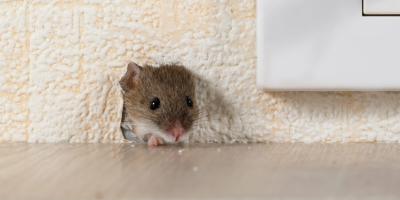Bed Bug Concern Rises within the Healthcare Industry

While bed bugs are commonly associated with hotels, their presence in healthcare facilities is increasingly becoming a significant concern.
This issue shouldn't be underestimated, as a bed bug infestation can lead to several operational challenges:
- Introduction of bed bugs by employees, guests, or visitors.
- Bites affecting customers, residents, patients, and staff.
- Potential legal liabilities and associated costs.
- Negative media exposure and reputational damage.
- Infestation jeopardizes furniture and inventory.
- High expenses related to treatment efforts.
- A necessity for proactive pest management initiatives.
- Growing prevalence of bed bugs in hospitals and healthcare environments.
The rise of bed bugs in healthcare facilities
Bed bugs have adapted to thrive wherever humans reside, posing risks in today’s society.
Their discovery in healthcare facilities may indicate hygiene deficiencies and discomfort for patients.
Studies conducted by the National Pest Management Association (NPMA) and the University of Kentucky highlight an escalating trend in bed bug issues within healthcare sectors:
- Nursing homes: increase from 46% to 58%.
- Hospitals: rise from 33% to 36%.
- Doctors’ offices/outpatient services: surge from 26% to 33%.
Factors contributing to this rise include high patient turnover and frequent visitor traffic.
Healthcare Facilities are 2nd leading in Bed Bug services
Studies conducted by the National Pest Management Association in 2018, which surveyed pest control professionals on their bed bug experience in the United States, found the prevalence of bed bugs in healthcare facilities. 59% of pest professionals treated bed bugs in nursing homes, and 36% of pest professionals have encountered them in hospitals. Bed bugs are typically found in couches and bed frames, but can also be found in wheelchairs, bedside lamps, and even purses.
Given these observations, it is crucial for healthcare facility managers to:
- Identify and prioritize high-risk areas.
- Implement proactive pest control measures.
- Establish clear protocols for effective management.
Addressing these issues proactively is essential to maintaining health, safety, and cost-effectiveness standards.
Interestingly, approximately 60% of the population may not display visible reactions to bed bug bites. Symptoms often include red, itchy welts or bumps.
Signs of infestation to watch for include:
- Fecal stains resembling marker smudges on mattresses or bedding.
- Discovering dead bed bugs or their cast skins in mattress seams.
- Detection of small, pearly-white bed bug eggs, usually clustered together.
Bed bugs are typically found in areas where people sleep or rest, as well as in high-traffic locations such as break rooms and lounges with upholstered furniture.
To effectively manage the growing challenge of bed bugs in hospitals, it is crucial to adopt and adhere to proactive strategies for bed bug control.
Stay aware and updated about bed bug infestations to learn more about establishing comprehensive guidelines and protocols to mitigate bed bug risks in your healthcare facility. It’s not worth the risk of the well-being of patients or running your name through the mud because of an infestation or untreated pest problem.



